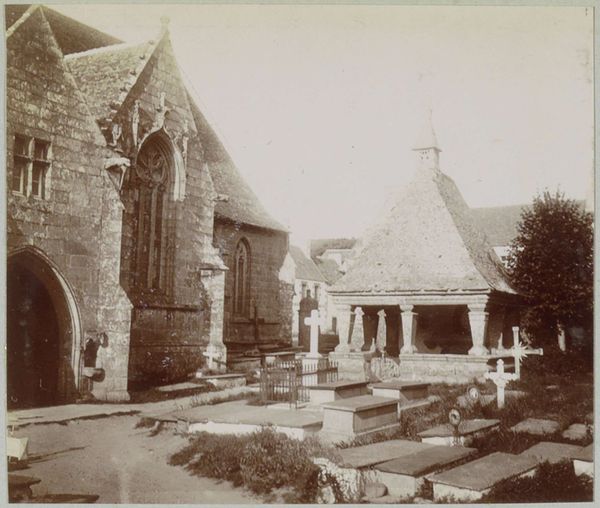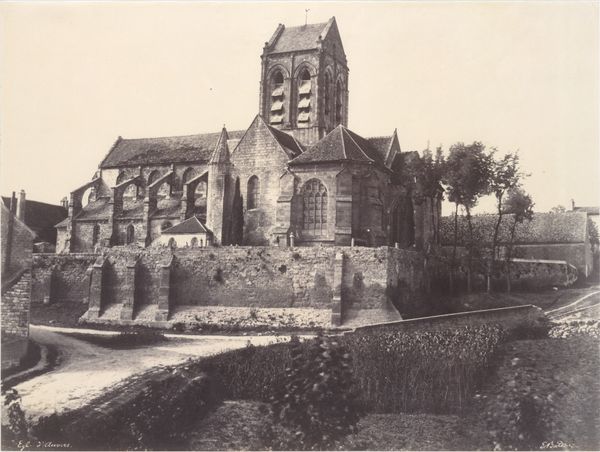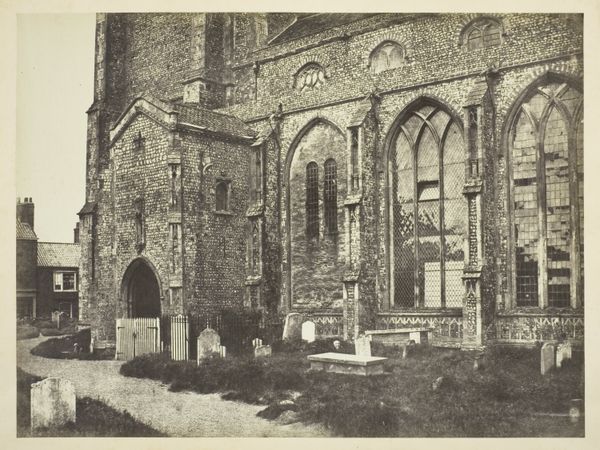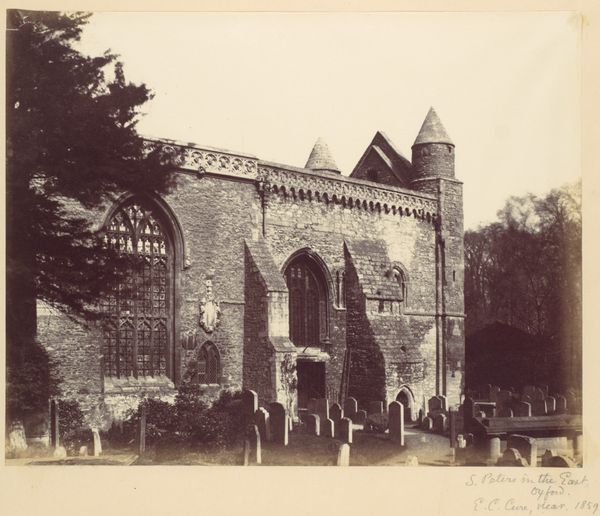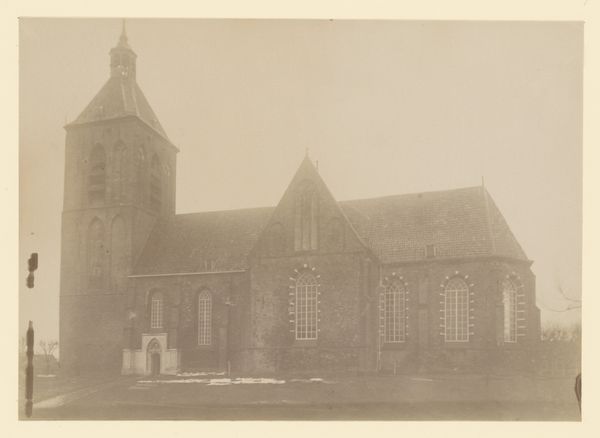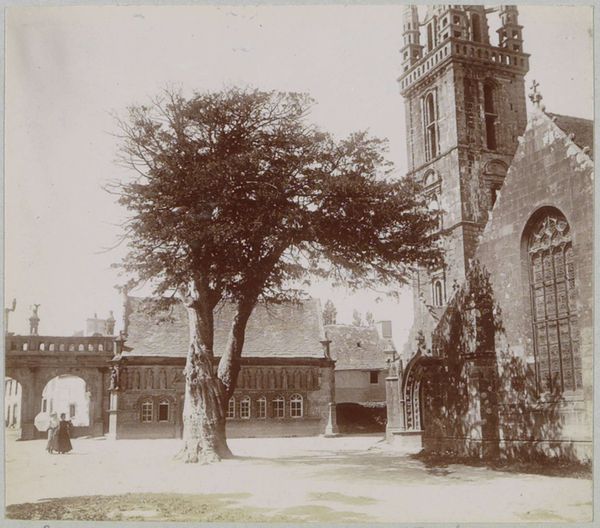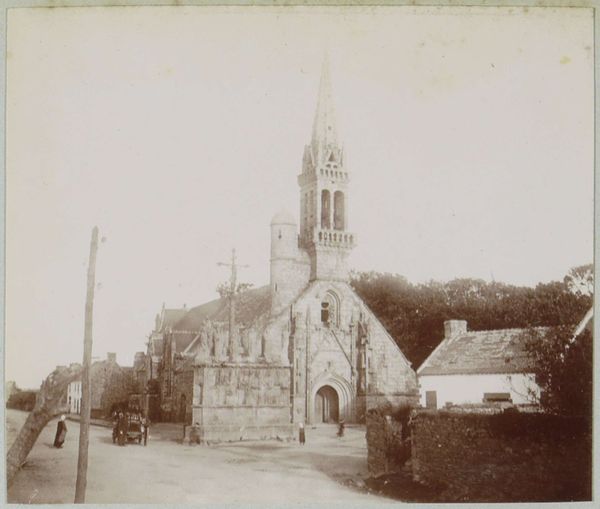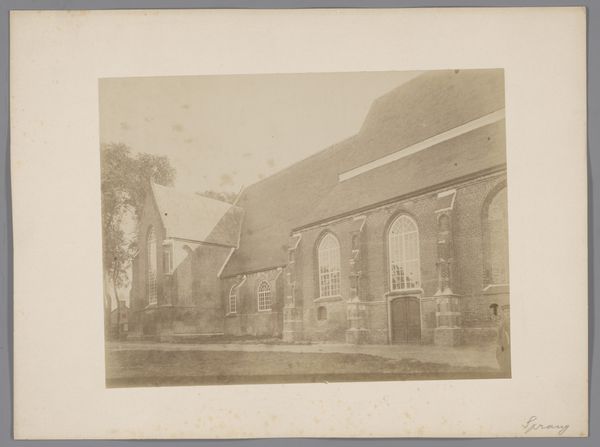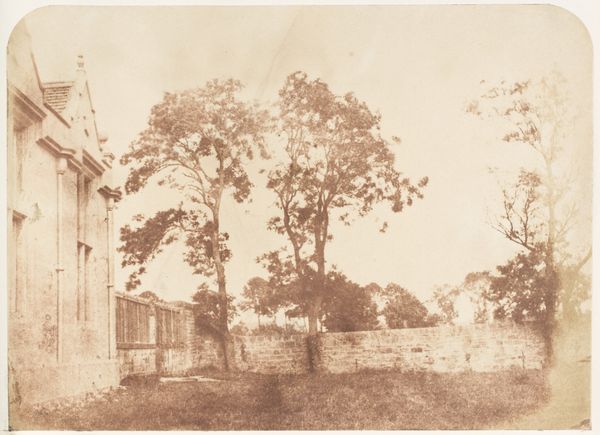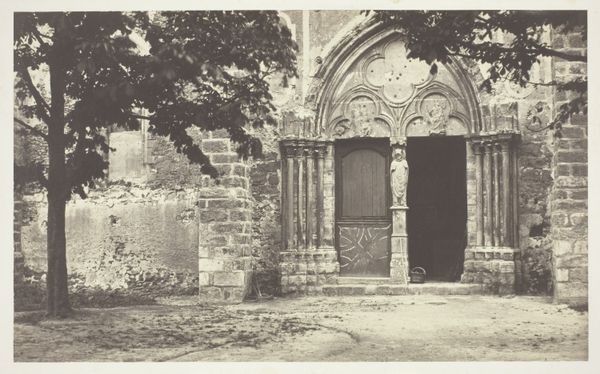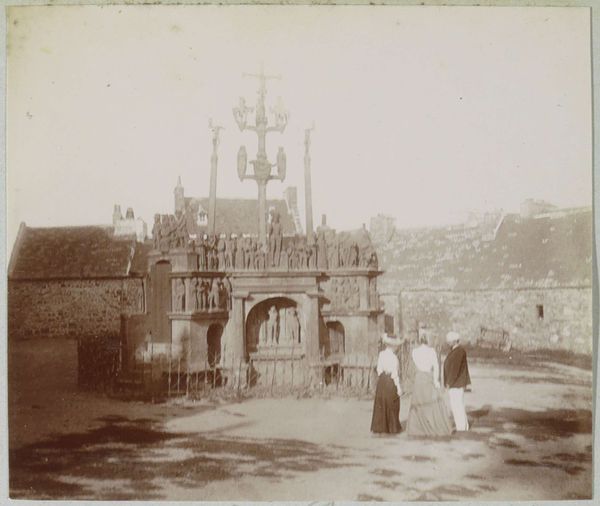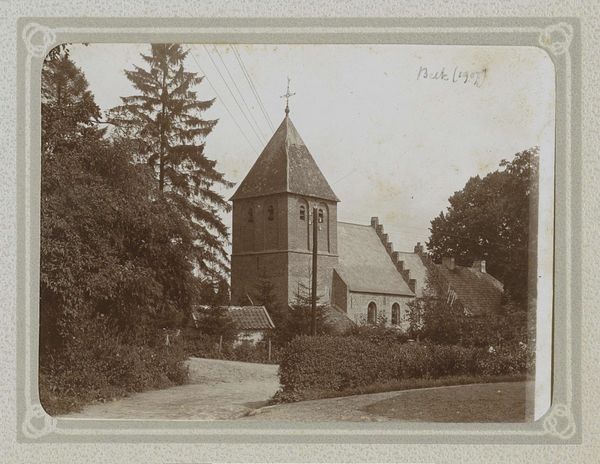
albumen-print, plein-air, photography, site-specific, albumen-print, architecture
#
albumen-print
#
16_19th-century
#
medieval
#
plein-air
#
landscape
#
historic architecture
#
traditional architecture
#
photography
#
site-specific
#
france
#
19th century
#
cityscape
#
history-painting
#
albumen-print
#
architecture
Dimensions: 7 1/16 x 8 5/8 in. (17.94 x 21.91 cm) (image, sheet, irregular)10 x 13 in. (25.4 x 33.02 cm) (mount)
Copyright: No Copyright - United States
Editor: Here we have Eugène Atget’s "Church," a photograph taken around 1921. It's an albumen print, bathed in sepia tones. It's striking how timeless it feels, like a scene captured centuries earlier. What's your perspective on this work? Curator: Well, seeing Atget brings up the interesting tension between documentation and artistic expression. While he saw himself documenting “Old Paris,” his work has become deeply intertwined with artistic movements. This photograph invites us to consider the public role of architecture, particularly religious architecture. How does the placement of the church within the cityscape shape our understanding of its significance, particularly viewed through Atget’s lens? Editor: That’s a good point. It seems quite deliberate, almost staged, placing the fountain prominently in the foreground, creating layers between the viewer and the church itself. Is he critiquing or celebrating? Curator: Perhaps neither, or both! He's capturing a moment in time. Notice the time of day based on the shadows. In early twentieth century Paris, what do you suppose Atget was thinking of showing through this chosen point-of-view? Editor: Maybe the ordinary life that happens around the church? It’s not presented as some untouchable monument. Curator: Precisely. He emphasizes how this historical landmark interacts with everyday life. Consider the evolving role of the church itself during this era and what the politics of the image may infer about Parisian culture. Editor: So it's less about the specific architecture and more about the church as a fixture of Parisian life. I am intrigued by how his framing is almost democratic. Thank you, I never would have thought about the church's political role! Curator: Absolutely. It reveals the intricate relationships between structures, individuals, and evolving urban life and landscape, making this image both visually engaging and historically resonant.
Comments
No comments
Be the first to comment and join the conversation on the ultimate creative platform.
